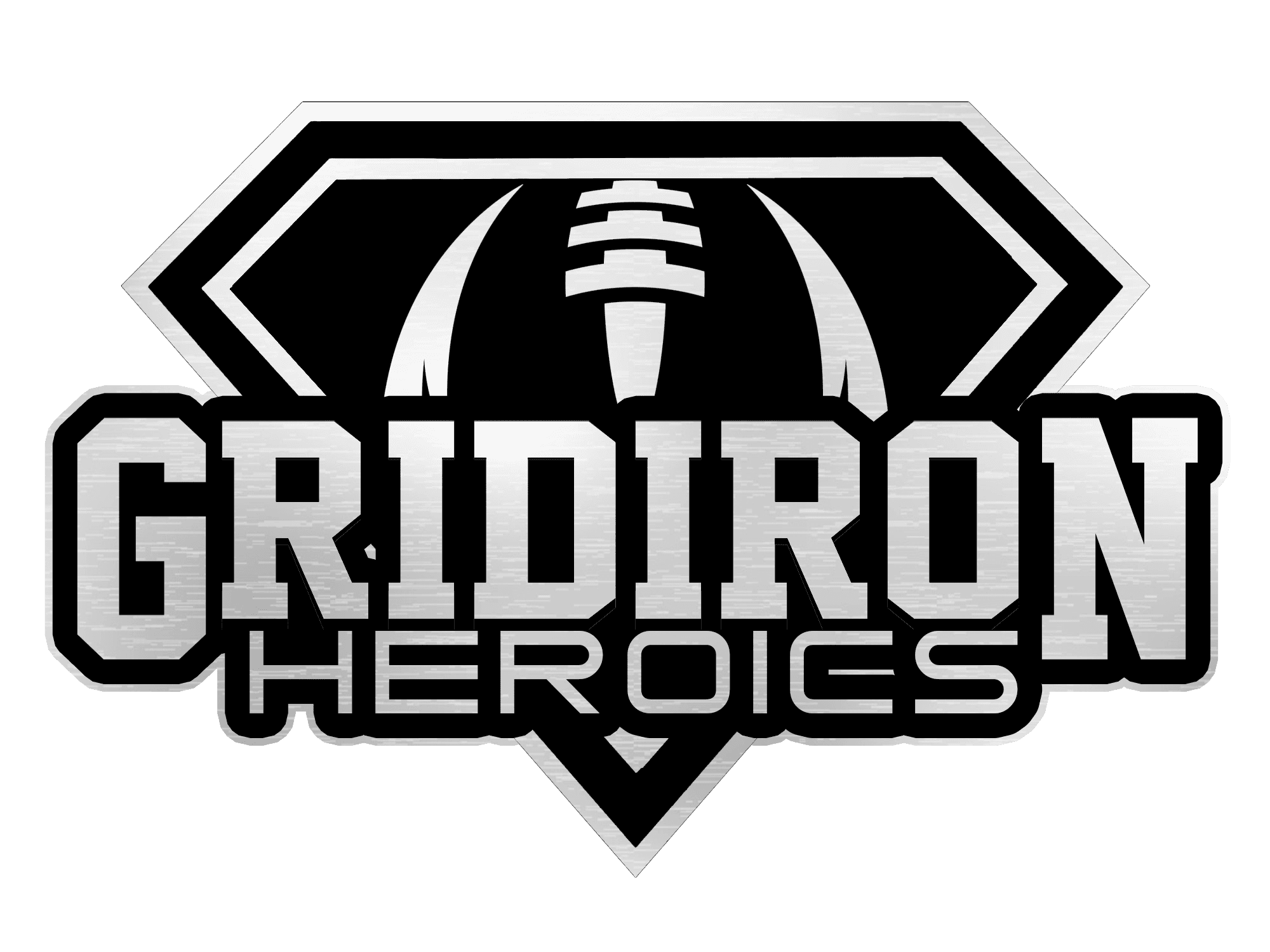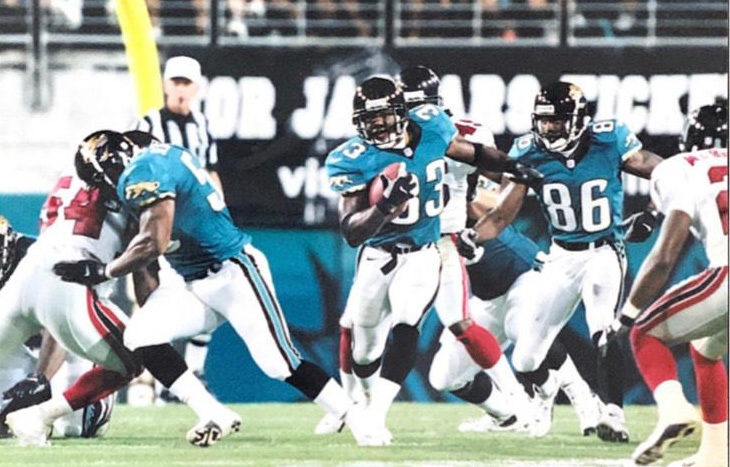This is the second of a two-part series chronicling the journey of Shyrone Stith Virginia Tech running back from 1996-1999. This is the link to the part one of this series.
After a successful 1998 season, Shyrone Stith and his Virginia Tech teammates went through an inspired spring practice with a lot of returning weapons and a full line on offense, and they had playmakers and disruptors on the defense. There was also the added benefit of having two guys named Michael Vick and Corey Moore.
With Lamont Pegues gone, Shyrone Stith was poised to break out as he finally had his year as the top dog in the backfield.
Stith and the Hokies emerged from spring ball ready to take the college football world by storm.
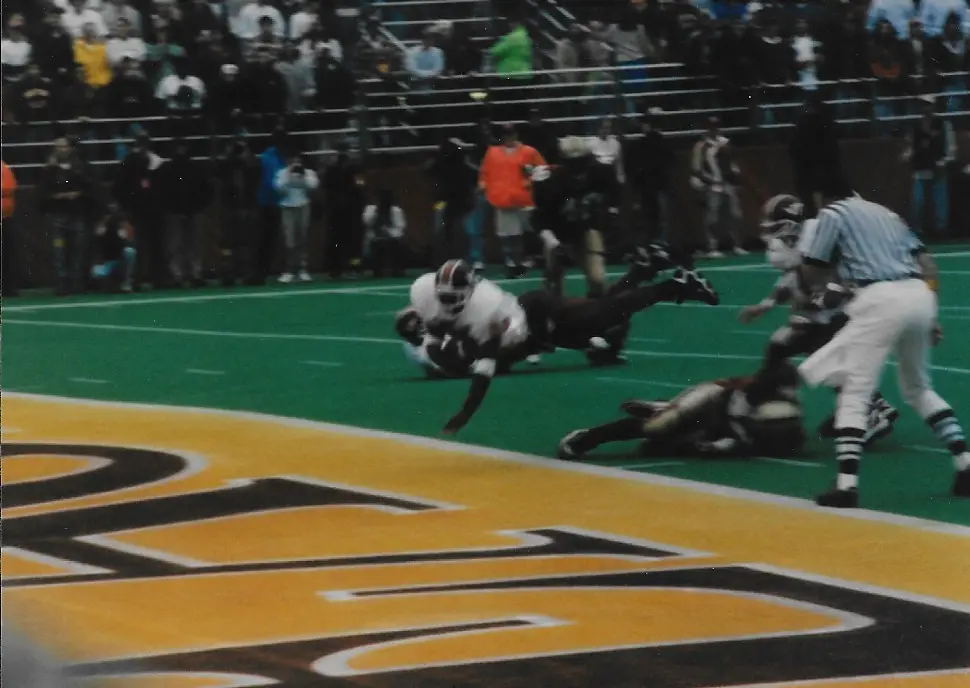
That Special 1999 Season
That storm brewed over the summer and hit hard in the fall of 1999. Those Hokies were a competitive bunch, Stith admitted. “We wanted to win, and we wanted to win big.” They did exactly that. Virginia Tech raced out of the gates with a 47-0 thrashing of James Madison, and they followed that with a 31-10 victory over Alabama-Birmingham.
The Hokies won nine of their eleven games that year by 20 points or more. In those other two wins, they beat Pittsburgh by two scores (30-17) on the road, and of course, there was the Miracle in Morgantown, a 22-20 walk-off victory over West Virginia.
“After that game, it was like, no way, we’re not easing up, we’re giving everybody all we got every game,” Stith said of the team after the West Virginia win. “We knew we had something good.”
He was right. After returning from Morgantown, the Hokies scored 43, 62, and 38 points in their next three games, closing out the season as undefeated Big East champions.
Stith had a great year for Virginia Tech in 1999. He eclipsed 100 yards in each of his first four games, hitting a season high of 162 in week three against Clemson. He finished with five 100-yard games, a total that certainly would have been more had he stayed in games through the fourth quarter.
(Author’s note: in the season finale against Boston College, Stith came out of the lopsided win in the fourth quarter. He ended that game with 97 yards rushing. Earlier at Rutgers, he ran for his season low of 59 yards, but that was through a quarter and a half. He was removed from the game in the second quarter.)
Despite those early exits from games in 1999, and despite playing with Michael Vick, who rushed for 585 yards himself, and Andre Kendrick, who gained 645 yards that year, Stith still finished first in the Big East in rushing attempts (226), third in rushing yards (1119), and first in touchdowns (13).
There is absolutely no doubt in my mind that had he played complete games throughout the year – or even close to complete games – Shyrone Stith would have rushed for closer to 1300 yards. That would have put him in the top six of single season rushing yards in Tech history. And a few hundred extra yards would also put him in the top ten in career rushing yards.
However, the talented tailback was never one to focus on his own numbers. “I’m not a guy who is big on accolades or stats,” he confessed, “I just want to help my team win.” He also had great camaraderie with him teammates and enjoyed their successes. “Back then we loved seeing each other win and get into the game,” he said. “It made it well worth the practice time.”
PARTY LIKE IT'S 1999 🎉
✅ Anthony Midget INT sets it up
🗝 Blocks by @JFerguson27 + @1AndreDavis
🏡 Shyrone Stith 41 yards #TBT vs. The U pic.twitter.com/yJprjiFxSq— Virginia Tech Football (@HokiesFB) November 2, 2017
The National Championship Game
At the end of the 1999 season, Virginia Tech, the undefeated Big East champions and #2 ranked team in the nation, played top ranked Florida State for the National Championship. Although they lost 46-29, the game was there for the taking. The final box score highlighted a Tech team that outrushed its opponent 278-30. The Hokies out-possessed FSU 36:25 to 23:35. And after three quarters, Virginia Tech led the Seminoles 29-28.
So what happened?
Virginia Tech was beaten at their own game – special teams and turnovers. FSU scored 14 points on two special teams plays, and they recovered three fumbles. Add in a few botched fourth downs by Tech and three long Seminole passing touchdowns, and the final score seemed a little lopsided.
The other factor was depth. Florida State had it, and Virginia Tech did not. The Hokies matched the ‘Noles in talent with their starters, but once the Hokies began to lose first-teamers to injury, it compounded this depth issue, especially late in the game.
One of those key injuries was Shyrone Stith, who twice hurt his knee on kickoff returns, missing a little time for each injury but continuing to play. However, in the second quarter, he added a high ankle sprain that put him out of the game for good.
It is hard not to think, “could have, would have, should have.” At the time of his departure from the game, Stith already had 68 yards on only 11 carries. Who knows what would have happened had he been able to finish the game and keep running at a six-yards-per-carry average?
VT vs. Florida State (2000)
Load option with Vick at the helm. pic.twitter.com/ofCWPtDaHT
— Last of the Fullbacks (@TheLastFullback) March 1, 2022
The Decision to Leave School Early
After the defeat in the Sugar Bowl, Shyrone Stith had an important life decision to make about his future. With one year of eligibility remaining, he had to decide whether or not to forego his senior year and enter the NFL draft.
Prior to the National Championship game, Stith admitted that he had no intentions of leaving Virginia Tech early for the NFL. In fact, before to the game, Stith recalls head coach Frank Beamer questioning him on his plans, and more than just once.
However, after suffering three injuries in the Sugar Bowl, thoughts changed for the talented running back. “Getting injured definitely had a lot to do with me leaving early,” he admitted. That is when he contemplated his future. He knew he could come back from this ankle injury, train, and get ready for spring practice.
However, he also knew that football life was fickle. He could get hurt at any time and lose his opportunities to move on to the next level. That very scenario played out a few hours north.
“What if I come back and tear an ACL like Poindexter did at UVa and messed up his whole NFL career?” Stith pondered.
(Author’s note – University of Virginia safety Anthony Poindexter was projected as a potential first round draft pick had he left school after his junior season. He opted to return to Virginia for his senior year in 1998, where he unfortunately injured his knee late in October when a teammate fell on him during a tackle. Poindexter missed the remainder of the year, fell to a seventh-round draft pick in 1999, missed much of his first NFL season with injury, and only played in ten games during 2000, with his NFL days essentially ending there.)
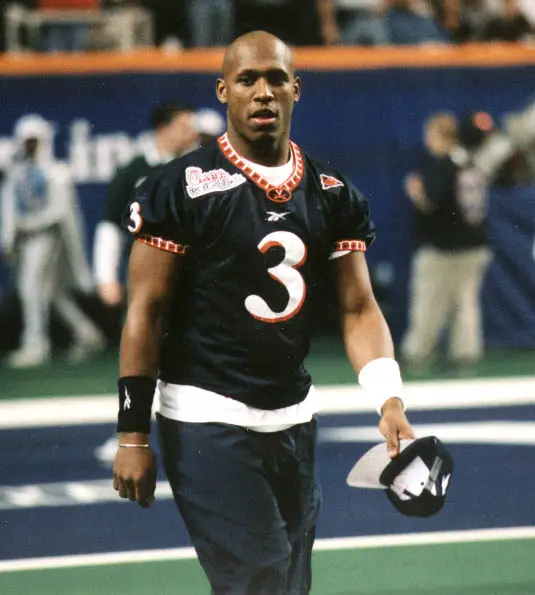
Stith also talked to former Tech running backs who returned for their senior seasons but questioned if that was the right decision. To add to his own though process, Stith had a child on the way and wanted to provide for him.
On top of all of that, his own personal situation contributed to the dilemma. “I had to put in for emergency loans to pay bills, to eat. I can’t work. My mom’s working two jobs.” Stith loved playing football at Virginia Tech, but the financial strains of student-athlete life under 1990’s NCAA restrictions were adding up.
Shyrone Stith decided to forego his final year of college eligibility and enter the NFL draft. Teammate Ike Charleton also declared early, making the pair the first Virginia Tech football underclassmen ever to leave school early for the NFL.
Adjusting to Professional Football
Stith was drafted in the seventh round of the 2000 NFL draft (243rd overall) by the Jacksonville Jaguars. Although he went much lower than many expected, including draft expert Mel Kiper who told Stith that he should go in the third round or higher, the former Tech running back was happy with the club where he landed. “I loved Jacksonville because it was a good mixture of veterans and young players.”
The former Hokie felt comfortable around his new teammates and he was having fun. There was good camaraderie, from his peers in the backfield to the offensive linemen to the defensive units. It was a familiar environment, and as he described, “It felt like Virginia Tech when I first got to Virginia Tech.”
However, there were plenty of adjustments to be made. For starters, the coaching style was completely different than what he experienced in Blacksburg. Hall of Fame coach Frank Beamer created a family-like culture at Virginia Tech. In Jacksonville, head coach Tom Coughlin was the complete opposite with a much more authoritarian coaching style.
Also, the NFL playbook was much, much more complex than anything Stith had in college. That resulted in a lot of “studying, studying, studying,” as the rookie put it.
A quick lesson that Stith learned was the importance of taking care of his body. “Learning how to eat right and hydrate yourself was key,” he said. So was stretching and massage.
Yet another adjustment was the grind in practice. As a seventh-round draft pick, Stith felt more like a free-agent who had to prove himself day-in and day-out. In addition to running reps with the offense, Stith found himself running scout team to help the defense. Because he was a candidate for kick return, he lined up with that unit, but he also repped on punt teams to help the punt return unit.
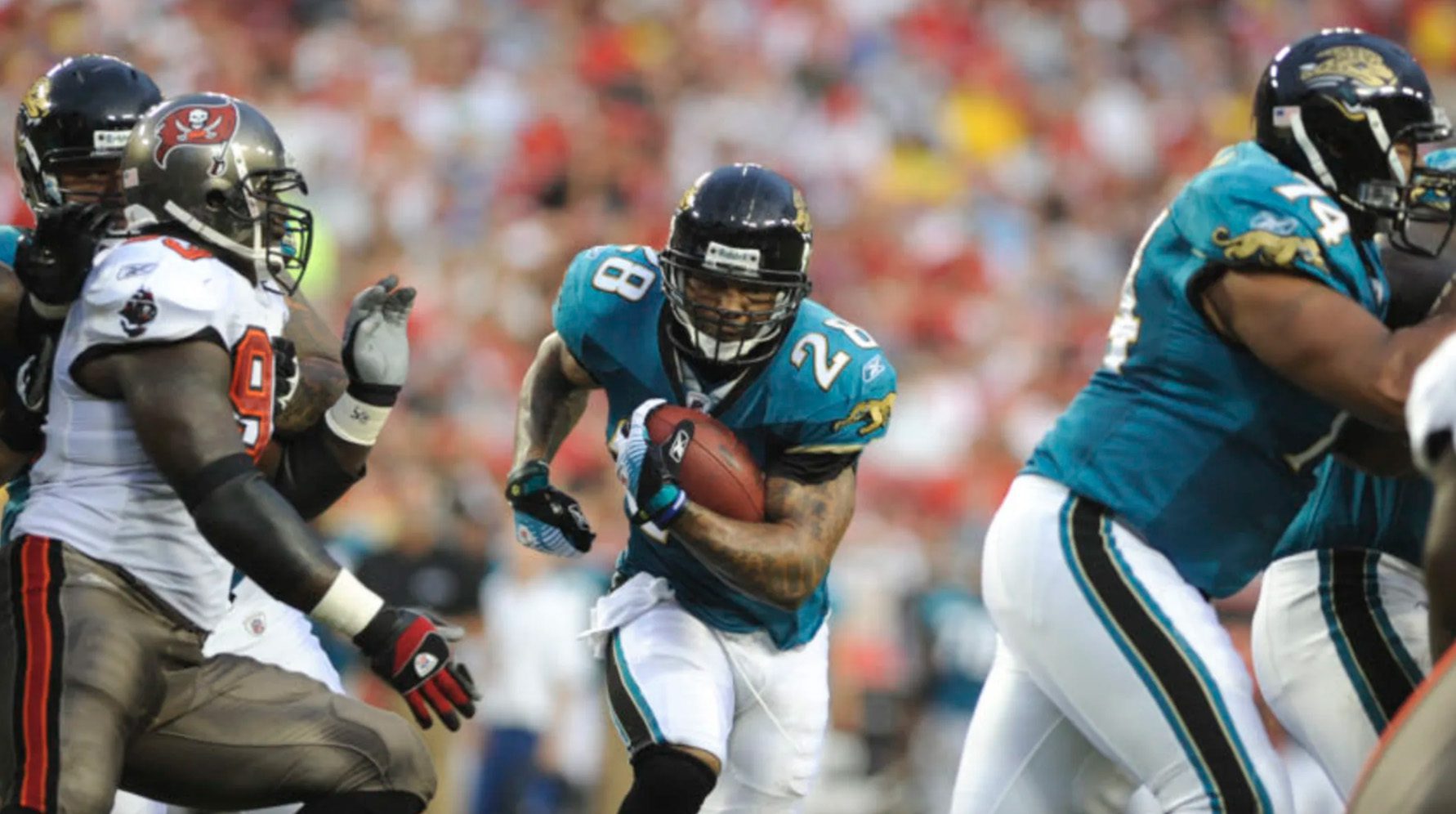
This was a lot of work for the rookie, but Stith was determined to make the roster, so he was up to the challenge. He also took it upon himself to learn from the veterans on the team, namely starting running back Fred Taylor.
“He took me under his wing, telling me the ins and outs on cutting and blocking and how the plays should be run,” Stith revealed. He was happy to learn from such an accomplished NFL player. (Taylor would go on to rush for 11,695 yards in his NFL career).
Stith was the third-string running back early in the year, eventually making his way up to second-string, prompting several coaches to remark that they could not believe he was a seventh-round pick. He appeared in 14 games in 2000, carrying the ball 20 times for 55 yards, and he scored one touchdown.
It was on special teams, however, where Stith made his greatest contribution to the team. He started on both the kickoff and kick return teams. As the deep man, he had 33 returns for 785 yards, with a long of 47. He was beginning to make his mark.
Derailed by Injury
Midway through his rookie season, Stith’s career took an unfortunate turn for the worse. He was injured on a kickoff return – much like he was in the national championship game – setting off a string of events that ultimately led to his NFL demise.
In the eighth game against Washington, big fullback Mike Sellers tackled Stith during a kick return, and the two landed awkwardly. “He jumped on my back, and my knee was the first thing to land, with my weight and his weight,” Stith recalled. “I finished the game, but I knew something was wrong.”
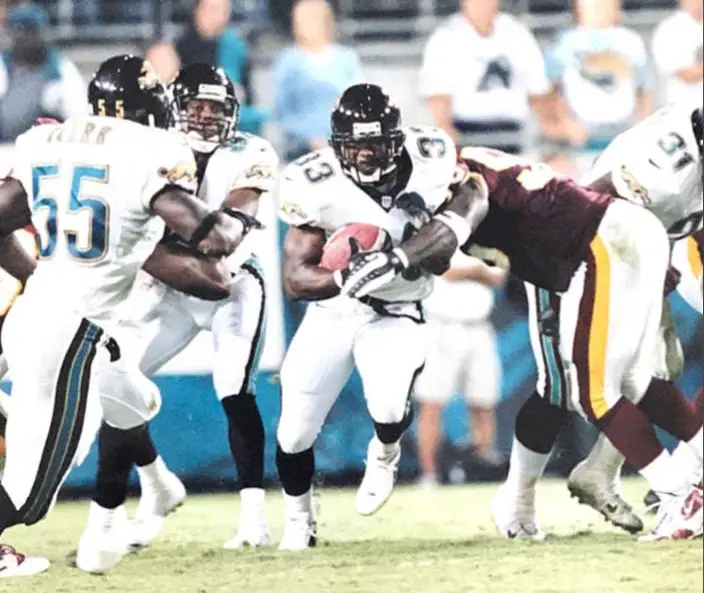
He found out that he had a torn MCL, a torn meniscus, and bone fragments in the joint. Despite that news, he played one more game the next week at Dallas. The bye week was upcoming, so he had surgery the day after playing the Cowboys.
The initial recovery was rough. Stith had complications, with excessive pain the day after surgery and an emergency hospital visit. On the second day after surgery, he returned to practice facility where the team doctors drained blood from his knee.
Despite these setbacks, Stith was back on the field shortly after surgery. “In two weeks, I’m back on the field,” Stith recalled. “I’m taking medicine to play, taking medicine to practice.”
Athletes have traditionally been taught to play with pain. And since he was also still fighting to keep his roster spot, Stith pressed on. He finished the season despite the pain from a surgery that did not properly heal.
The Unglamorous Side of the NFL
The following summer in practice, Stith tweaked the same knee. He knew something was wrong, but again, he was trying to make the team, so he played through the preseason without telling anyone. It was not until the end of camp that he finally went to the team trainers about the injury.
Just before the first game of the season, Stith’s agent called him. “They just released you.”
The second-year running back was injured, still going into treatment, and his agent asked for Stith to be put on Injured Reserve. However, the team had video of him jogging and running during practice, so they said he was well enough to try out for another team rather than keep him rostered while on IR.
While Stith was devastated to hear the news, he was not surprised. In one short year, he had witnessed several unscrupulous decisions by the franchise.
“I learned quick that ‘NFL’ didn’t actually mean ‘National Football League’,” he said. “It meant ‘Not For Long’.”
He recalled the release of his friend and fellow running back Chris Howard. “He got the ax right before the fourth game of the season.”
“I’ve seen guys get cut two days before the last game,” Stith remembered. “I’ve seen guys get cut after practice because a wide receiver dropped the ball too many times in practice.”
“I’ve seen guys get cut at pregame meal – at the table when they’re eating.”
So it was no surprise to Stith that he was released just before the start of the season instead of being put on Injured Reserve.
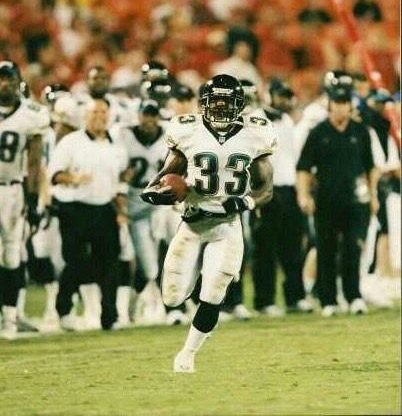
New Beginnings, Same Result
Over a month after being released from Jacksonville, Stith was called to tryout with the Indianapolis Colts. Star running back Edgerrin James had torn his ACL, and the Colts needed depth.
The free-agent made the team and became a backup to rookie Dominic Rhodes. It was a role reversal from the previous year, with Stith now giving advice to the (one year) younger running back. Stith became his mentor and friend. “Me and him clicked, we were like brothers,” he recalled fondly.
The 2001 season ended without any appearances for the second-year back, but he headed into 2002 with high hopes. James was returning from injury and Rhodes was back, but Stith had a good chance to contribute.
When Rhodes tore his ACL in preseason games, Stith’s role changed immediately. James still was not playing preseason games because of the previous year’s ACL injury, so Stith became RB1.
Going into the last preseason game, Stith was told he would start, play until halftime, then play special teams in second half. They would likely rest him because he was now starting at tailback.

But with Peyton Manning still in the game in the second half, Stith was sent back in so that Manning could have experience – and protection – in the backfield. On a wide receiver screen pass, Stith injured his knee again.
“My job was to block the cornerback, and the job of the guard was to hit the linebacker,” he explained. On the play, the guard fell on the back side of Stith, hurting the same knee that he injured in Jacksonville.
Despite the injury, Stith appeared in the first game (against the Jaguars ironically). “They taped my whole leg, from my ankle to my thigh. Then they said, ‘Here’s some Vicodin’.”
The struggle of taking pain killers just to practice and playing with an injury was old hat, and Stith knew enough this time to put an end to it. “I told my running backs coach, ‘Listen, coach, something’s got to give. I can’t keep doing this’.”
They went to head coach Tony Dungy, who did not know the seriousness of the injury. “I think I need surgery,” Stith confessed to his head coach. “I can feel something clicking. I’m taping my leg up. I’m taking Vicodin just to practice.”
In speaking with the compassionate Dungy, they realized together that the injury was probably exacerbated by the lack of rehabilitation the previous year. Stith remembered his coach’s response: “Dungy said, ‘That’s probably why you are still like this. You should not have been back in two weeks, this is a serious injury’.”
Stith knew that he could not continue to play with that injury, even though a surgery would be season ending. The head coach respected Stith’s position. “We are going to have to put you on IR,” Dungy said, and Stith went under the knife again.
After his surgery, the doctor told Stith that he had lost 15% mobility in the joint. Knowing the damage to his knee and the high risk of future injuries as an NFL running back, he now had a choice to make. He could keep playing and risk more damage and a possible knee replacement by the time he is 40. Or he could walk away, rehab the knee, and move on with his life.
Life After the NFL
It was not an easy decision, but Shyrone Stith chose his health and retired from football, returning home to southeastern Virginia. He had always wanted to be a teacher, so within a year, he was back in Blacksburg to finish his degree at Virginia Tech.
He then came back to Western Branch High School, where he worked as a long-term substitute teacher and high school football coach. It was during this time that he began work on his Master’s degree and teaching license.
His first full-time teaching job was in the Newport News Public Schools, and he stayed there for three years. However, he wanted a change of scenery and better opportunities, so he relocated to Northern Virginia.
He has been there ever since, and now he is in his fifth year as a middle school physical education teacher in the Arlington Public schools.
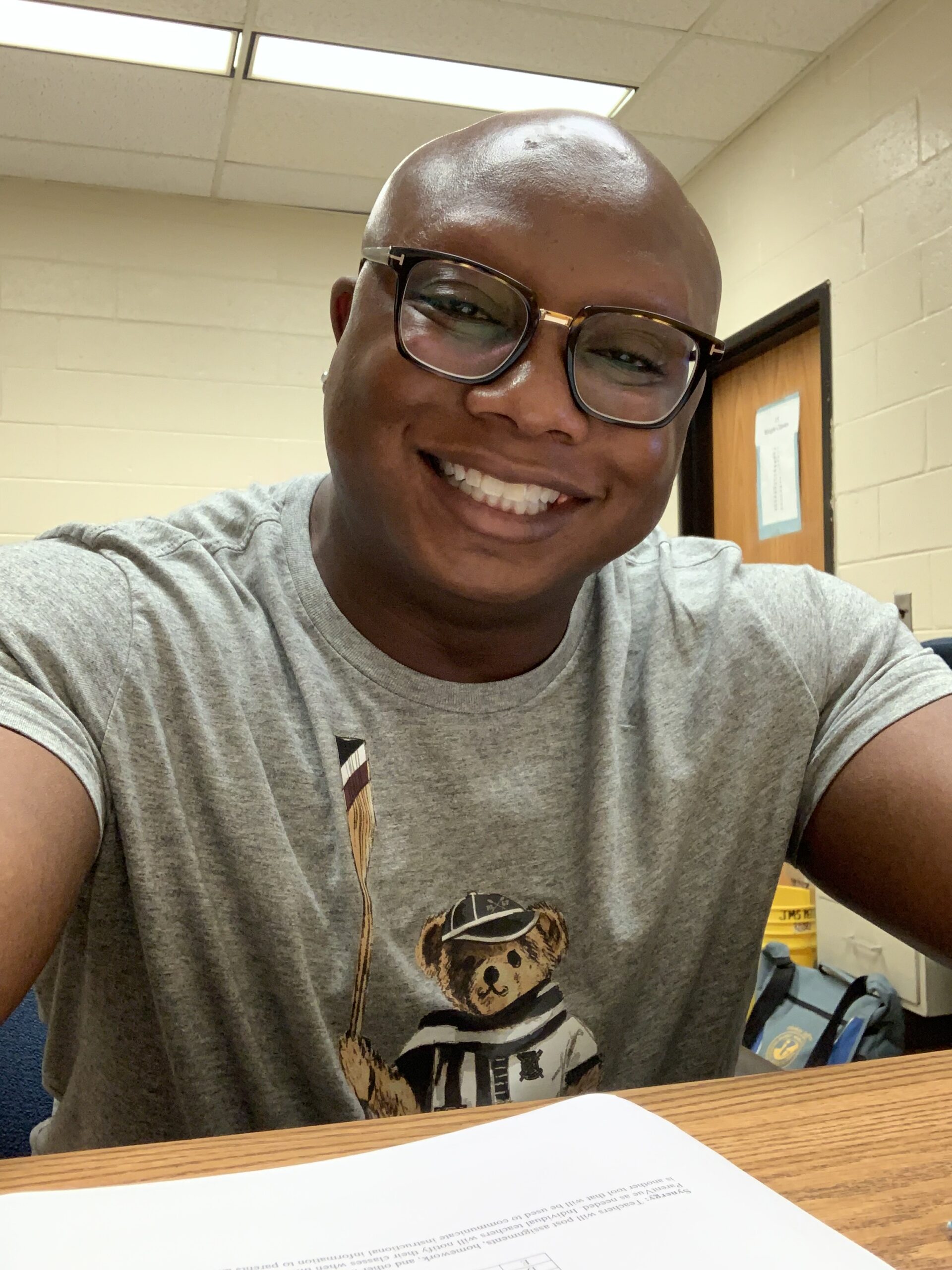
Life Lessons to Impart upon Youngsters
Stith enjoys his life as a middle school teacher, positively influencing students with lessons he learned from his own experiences. This is one of the aspects of his job that he likes most – being able to share his stories with an age group that he feels he can reach.
Those real-life experiences, from life in the projects to life in the NFL, hook his students and keep them engaged. “Kids respect that,” he said about telling those stories. “That’s when the real learning starts.”
“I just try to teach these kids the lessons that I learned early on,” Stith said. “We try to teach them what we went through because what they’re going through is nothing new.”
He also likes to share a value he learned early at Virginia Tech – the importance of building relationships and how it helped him become a better person. “Where I’m from you don’t get that,” he confessed, remembering the friendships and mentors he has had in his journey.
Stith recalls the influence of Hokies such as running backs coach Billy Hite, linebacker Tony Morrison, and fullback Brian Edmonds, crediting them with giving him a sense of who he could be.
Although it has a different context for young adolescents, having positive relationships certainly benefits Stith’s students too. “I always tell kids that the more people they have in their corner, the less likely they are to mess up.”

Once a Hokie, Always a Hokie
Shyrone Stith is a proud father of two and he lives an active life. Traits of his past are easily found in his present. The former professional athlete still likes to work out. And the Virginia Tech alum loves to link up with friends, especially his former teammates. Although he has not been back to Blacksburg too often, he did just visit recently to celebrate former teammate Corey Moore’s recognition for election into the NCAA Hall of Fame.
Stith is a passionate Tech fan and he is a voice among his alumni group. He loves to talk Tech football – during this interview, he and I went on several tangents just talking about the current Hokies team!
In looking back at Virginia Tech’s football history, it is easy to overlook or underappreciate Shyrone Stith. He shared time in the backfield all four of his years at Tech. He came out of games very early throughout the 1999 season. He left Blacksburg with a year of eligibility remaining, allowing Lee Suggs to take over and run for 1207 yards in 2000. If Stith stayed and had those yards, it would have brought his career total into the top four of all-time career rushing leaders at Virginia Tech.
But numbers do not tell the complete story. Stith was an explosive, powerful runner who could change games. He was also a team-first player who was happy to see his brothers get their shot too. And his performance in 1999 was an integral component of the Hokies’ march to the national championship game.
While his NFL career was derailed by injury, that does not take away from his legacy at Virginia Tech. He was a great player, but he was also a good teammate. He is a model of hard work, patience, and resilience, and Hokie Nation should not only be thankful for his contributions to the program, but they should also be proud of the example he has set off the field as well.
If you ever get to meet Shyrone Stith, be sure to say “Thank You” and show him some appreciation!
Further references:
If you never saw Shyrone Stith play, watch this YouTube clip of some of his Virginia Tech highlights. It will show you what kind of runner he really was:
To watch Shyrone Stith’s interview with Dwight Vick on his Vicktory Life – Legacy Spotlight podcast, click here.
Where are They Now? Shyrone Stith Virginia Tech Running Back – Part I
This story began in Part I. Click this link to read the first part of this series.
To read more of my articles on Virginia Tech football, click here.
To read more of the articles in my “Where are They Now?” series, click here.
